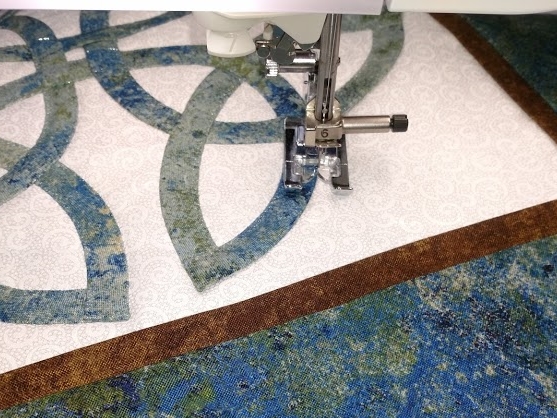
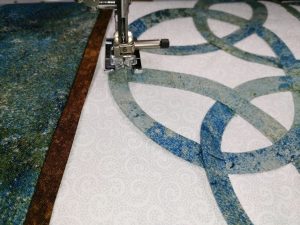
2025 UPDATE: My Celtic patterns can now be found in my online shop.
This is the ninth in a series of posts that will take you step-by-step through the process of creating a Celtic Quilt.
The lines that form my Celtic and Celtic-style knotwork designs are formed by cutting bias strips of fabric and sewing them into tubes, which are then fuse-basted onto background fabric. You can choose to appliqué the design (sew everything down), add borders, layer the quilt top with batting and backing, and then quilt by either hand or machine. Or you can choose (as I usually do) to add the border(s), layer the quilt top with batting and backing, and then machine appliqué and quilt in one step.
Here are some of my top tips for successfully appliquéing a Celtic-style design:

Choose the right thread.
I recommend a .004 polyester or nylon monofilament thread for your top thread. In teaching various appliqué classes for more than 20 years, I have found the single brand that seems to work best in the greatest number of machines is MonoPoly by Superior Threads. That said, I have also had students use Wonder Thread, YLI, and even Sulky successfully – it all depends on what works best in each particular machine.
I never use monofilament in the bobbin. Instead, I prefer a high quality 50 or 60 weight, 2 ply cotton, or a high quality 60 weight poly such as Bottom Line by Superior Threads. Using a relatively finer thread in the bobbin instead of an all-purpose 50 weight, 3 ply cotton thread makes it easier to avoid little dots of bobbin thread being visible on the right side of your work.
Note 1: monofilament can be a little tricky to work with, as it has an unfortunate tendency uncoil, get wrapped around the spool pin, and then break before you realize what has happened. Fortunately, you can minimize breakage by
(1) using a thread net over the spool,
(2) switching to a vertical spool pin instead of a horizontal one, and/or
(3) stitching slowly and steadily – avoiding abrupt stops or speed fluctuations that might cause the spool to spin.
Note 2: If you’d rather avoid monofilament, you could opt to use Bottom Line, or a 50-60 weight, 2 ply cotton thread in both the top AND the bobbin – just match the color of the thread as best you can to your appliqué fabric(s). Silk thread is also WONDERFUL, but can be pricy.
Choose the right tension settings.
Many machines now have automatic tension control, which generally does a very good job adjusting to whatever kind of thread you may be using. However, when it comes to monofilament thread, even high-end machines may need some minor adjusting. On my own machine, I find it helpful to lower the upper thread tension to between 1 and 2 when I’m using monofilament thread as the top thread in my machine (auto-tension for my machine is set at 4).
For more on thread tension and when and how to adjust it, see this machine quilting post: Machine Quilting FAQ & Top Tips.
Choose the right needle.
I get the best results with a Schmetz Microtex Sharp, size 70. These needles are very sharp, and are smaller in diameter than what you may be used to – which is helpful when you are using such fine thread.
Choose the right stitch and stitch settings.
I find a small zigzag stitch works best for this technique. Here is the sample stitching I did for my book:
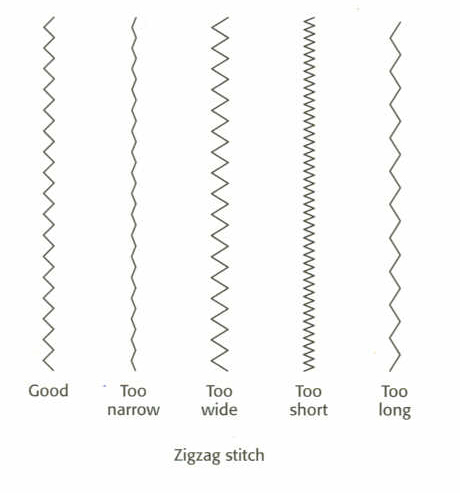

When you stitch, you want most of the stitch on the appliquéd fabric, with one side of the stitch going into the background fabric just barely off the edge of the appliqué.
Choose a method for locking the stitches at the beginning and end of a line of stitching, or on each side of a jump.
Celtic designs are characterized by alternating “unders” and “overs”. This means you can’t stitch continuously; you’ll need to jump over the intersections when the line you following goes “under” another line.
It is VERY IMPORTANT to lock your stitches on either side of the jump – otherwise, your stitching will come out.
Some machines have a great built-in locking stitch (several stitches almost on top of each other) at the press of a button; unfortunately, some built-in locking stitches cause an unsightly build-up of thread, so make sure you do some sample stitching first. Another generally good option is to use a back stitch. A final option for securing the beginning and end of each line of stitching is to take about 1/4″ of VERY tiny stitches.
Jumping the intersections will leave small loops of thread on both the front and back of your quilt. These can be trimmed off later.
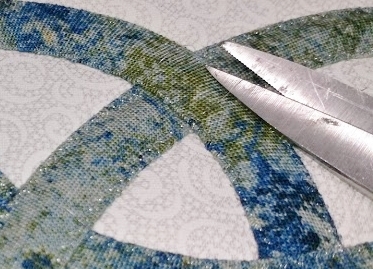
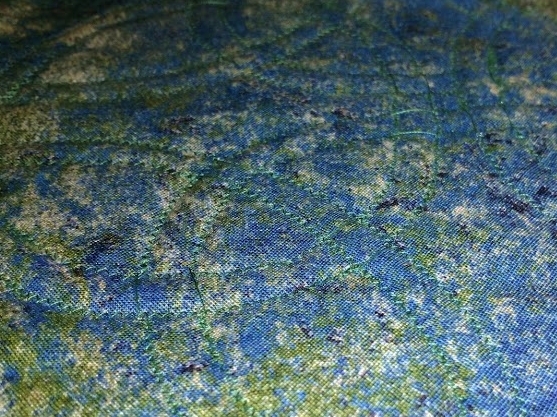
There you have it!
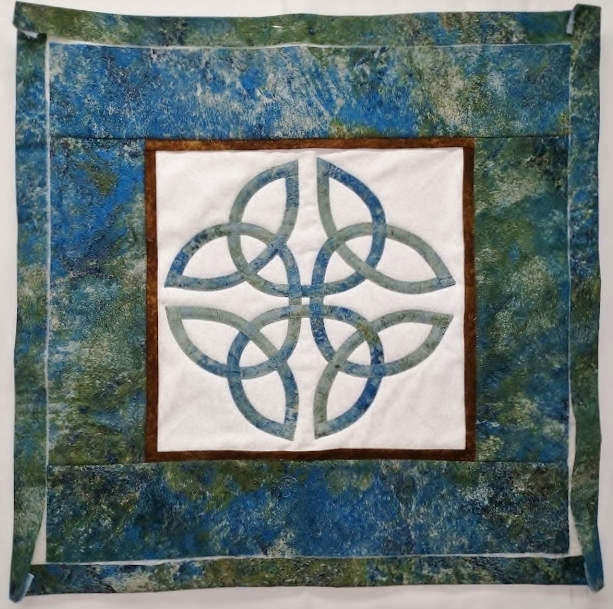
At this point, you are almost finished. Add a little quilting to your borders, and then you can trim away the excess batting and backing, and then bind your finished project. But if you enjoy machine quilting (like me) and adding lots of texture to your work, you can keep going…
One thought on “Making a Celtic Quilt – Top Tips for (Invisible) Machine Appliqué”